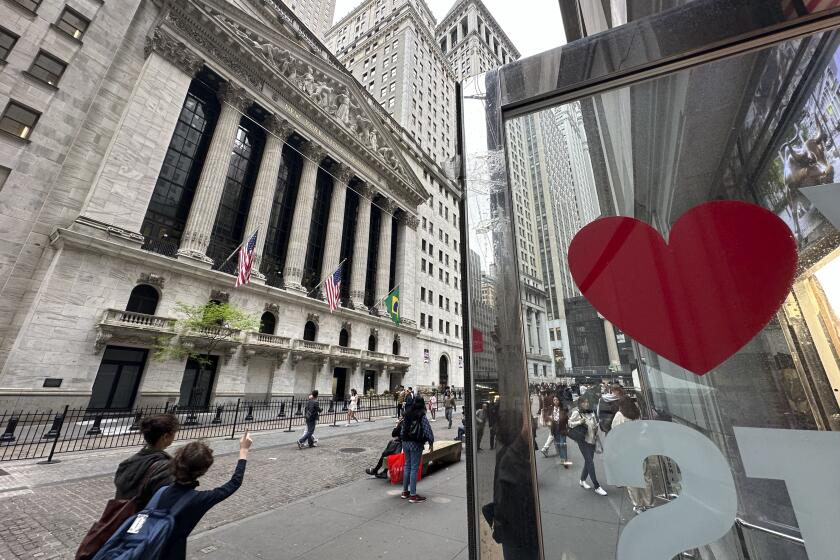Pension Plans Face Growing Lack of Funds : Benefits: The government reports on a widening gap between what companies have promised to pay and what they have set aside.
Despite robust investment returns on corporate pension assets, the federal government said Thursday that the possibility that some American workers may not receive all of their retirement benefits increased last year.
The Pension Benefit Guaranty Corp., the agency that insures pensions for 40 million Americans, said the 50 companies with the largest underfunded pension plans showed a $2.7-billion increase in benefits that were not backed up by money in retirement funds. The overall shortfall rose to $24.2 billion in 1991, from $21.5 billion in 1990.
“The increase in pension underfunding represents an increased risk to workers and retirees, whose benefits may not be guaranteed in full, and to the insurance program, which is already faced with a $2.5- billion deficit that is growing,” said PBGC’s executive director, James B. Lockhart.
The airline, steel and automobile industries dominated the PBGC list--paced by General Motors Corp.’s $9.3 billion in unfunded guaranteed benefit liability, Chrysler Corp.’s $3.6 billion, LTV Corp.’s $2.8 billion and Bethlehem Steel Corp.’s $1.6 billion. (GM this week estimated its underfunded pension liability could hit $11.4 billion by year end.)
Company officials did not dispute the agency’s figures, but indicated that they would meet their pension obligations as required by law.
“We recognize we are in an underfunded position,” GM spokesman Bill Winters said. “We have and will continue to meet all our obligations.”
Chrysler spokesman Tom Houston said the company’s current pension levels are in excess of requirements set under federal law. “As the economy continues to improve and as business gets better, we hope to increase (pension) funding levels,” he said.
The report said that not all underfunded plans pose an immediate threat to retirees or to PBGC. Nevertheless, Lockhart claimed that the pension underfunding problem poses the same challenges for his agency as the thrift debacle posed for the Federal Savings and Loan Corp., the depositor insurance fund wiped out by hundreds of S&L; failures in the 1980s.
Lockhart expressed concern that underfunding has increased each year since the agency began publishing the list in 1988. “The growth in pension funding is a reminder that pension reform should remain a top priority,” he said.
However, the National Assn. of Manufacturers criticized the list, saying PBGC’s conservative financial assumptions about future interest rates overstates the problem and creates unnecessary anxiety.
“The list, in our opinion, bears no real relationship between the health and stability of the private pension system,” said Christopher Bowlin, senior associate director of employee benefits for NAM. “Would you rather be working for a company that has an overfunded plan but is going bankrupt? Or would you rather be working for a financially strong company that has an underfunded plan?”
He said PBGC uses the list to generate publicity “to further their own political agenda” for more government legislation as well as more bargaining leverage with companies.
Union officials said they are watching the pension issue closely. A spokesman for the United Auto Workers in Detroit said the union continues to monitor members’ pension plans and is “concerned but not alarmed” by the government’s report.
Since PBGC began publishing its top-50 list four years ago, the growth in pension liabilities has outpaced assets. While assets rose to $70.4 billion in 1991 from $42.6 billion in 1988, liabilities increased to $94.6 billion from $59.7 billion during the same period. This has resulted in underfunding almost doubling--rising to $24.2 billion last year from $13.5 billion in 1988.
The PBGC is a nonprofit corporation created by Congress in 1974 to insure the payment of private, defined-benefit pension plans. Its programs now cover more than 40 million workers in about 85,000 pension plans.






